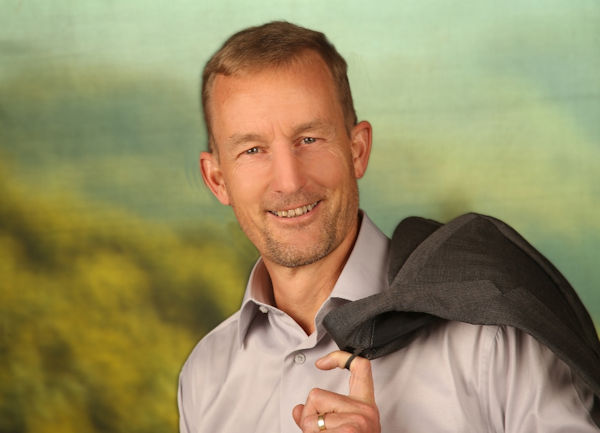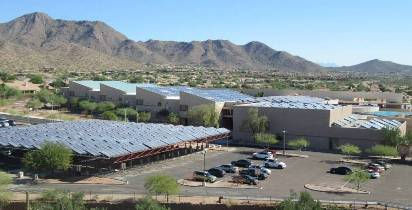Posted: February 27, 2023

Photo: Energetic Solutions
Non-technical barriers often play a critical role when it comes to increasing the number of solar cooling systems in the sunbelt countries. Business and financing models are among the important factors in overcoming non-technical barriers. In order to have an informed discussion about successful models it is important to have a clear definition of them as well as knowledge about the limitations of the available business models and financing options. Jan W. Bleyl, Senior Consultant and owner of Energetic Solutions from Austria, is a dedicated expert on lifecycle cost-benefit analysis and business model development. IEA SHC Task 65 – Solar Cooling for the Sunbelt Regions invited him to draw up an overview with the aim of clarifying the terms.
"We should make a clear distinction between business models and third-party financing – these terms are often mixed up,” said Bleyl. Third party financing (TPF) can be part of a business model, but the latter goes well beyond financing.
In a nutshell: first of all, the value proposition of a business model must deliver "gains" and "pain relievers" to the customer in order to be successful. Third-party financing (partial or 100 %) may be (an optional) part of this value proposition. A business model also sets out customer segments, relationships and sales channels. On the company side, a business model describes how the company creates, delivers and captures value through its key activities, resources and partners. And, of course, revenue streams and cost structure need to be included.
Bleyl has listed the most relevant business and financing models for the Task 65 team that could be used for solar cooling systems (see table).
|
|
Term
|
Value proposition tocustomers
|
Requirements/limitations
|
|
Energy service business models
|
Energy supply contracting
|
Supply of cooling demand including price, function & performance guarantees, often includes third party financing
|
Customers’ willingness to outsource with a long-term contract
|
|
Energy performance contracting
|
Guaranteed energy savings against a baseline | often includes third party financing
|
Customers’ willingness to outsource with a long-term contract
|
|
Integrated utility services
|
Utility company up-front financing of demand-side EE or RE investments. Clients repay through a new line on their utility bill ('on-bill financing')
|
Top-down policy support, and regulatory approval. Shift of utility company strategy to invest in demand-side customer resources
|
|
Special purpose vehicle
|
Total outsourcing to purposed legal entity
|
Restricted to large projects and programmes ≥ EUR 10 to 20 million
|
|
Financing models
|
Vendor credits
|
Instalment purchase
|
Short-term financing only, no services
|
|
Leasing (operate or finance)
|
Lessor financing à right to use an asset
|
For re-usable (fungible) assets only
|
|
Financial development aid / concessional finance
|
Soft loans and technical assistance
(often builds on previous technical development aid programme)
|
Requires programme volumes of EUR 10 to 50 million and local counterpart institution
|
Overview of business models and third party financing. Combinations of certain options are possible. Obviously, a self-financed implementation of an energy saving or renewable system is always an alternative option that is not mentioned in the table.
Source: Jan W. Bleyl - Energetic Solutions 2023
Some examples of ESCO (energy service company) models have existed in the solar thermal sector for a long time. Scottsdale’s Desert Mountain High School in Arizona, USA, was one of the first clients to profit from a cooling energy supply contract. In 2014 the former SOLID from Austria financed and installed a 3.4 MW cooling system and signed a 20-year cooling energy supply contract with the school. https://solarthermalworld.org/news/usa-solid-operates-34-mwth-cooling-system-esco-arizona/ solarthermalworld.org has created an entire sub-section on ESCO, where you can find more case studies. https://solarthermalworld.org/keyword/esco/

Solar roof for Scottsdale’s Desert Mountain High School in Arizona, USA, for green air conditioning
Photo: SOLID
Special purpose vehicles help mitigate risks
Special purpose vehicles (SPV) are widespread, e.g. in the wind farm or large-scale PV sectors. Here, a separate legal company is established, which plans, builds, finances and operates the energy production units and signs all the relevant documents such as EPC contracts, O&M agreements or loan contracts. “The advantage is that you can separate the risks of large investment volumes from the core company. However, transaction costs are high and this business model is therefore only suitable for investment volumes of typically at least 10 to 20 million EUR,” explained Bleyl.
The first solar thermal specialists are already using this model successfully - for example NewHeat in France. The company created an SPV already in 2018 to finance and operate a package of solar industrial and district heat projects. https://solarthermalworld.org/news/french-independent-heat-supplier-optimise-and-de-risk-all-contracts/. Solarfields from the Netherlands also founded an SPV recently for the 37 MW district heating plant under construction in Groningen.
https://solarthermalworld.org/news/37-mw-solar-district-heating-plant-in-the-netherlands-with-outstanding-features/.
Integrated utility services: Investments for solar cooling are repaid on utility bill
Bleyl considers the utility-based on-bill repayment model to be suitable for the special situation in some sunbelt countries with weaker economies. “You will rarely find technology companies, for example in the Caribbean islands, other than the electricity suppliers that can conclude an energy service or leasing contract over 10 years for a household solar cooling unit”, stated Bleyl.
On-bill repayment is widely used in the United States for energy-saving measures or heating upgrades in the residential sector. Here, the asset including the re-financing agreement can be sold with the house if the owners have to move. Bleyl has already accompanied the implementation of efficiency measures in four Caribbean countries using the business model of integrated utility services. He added: “Utility companies rely on long-term relationships, so they are excellent partners for the dissemination of demand-side energy efficiency and renewable technologies.”
"The overview created by Jan W. Bleyl is a good basis for the discussions with the task experts," emphasised Dr Uli Jakob, Chair of Task 65. "We will definitely analyse the models more closely and identify their advantages and disadvantages in relation to the specifics of the solar cooling market in the sunbelt regions.”
Websites of organisations mentioned in this article: